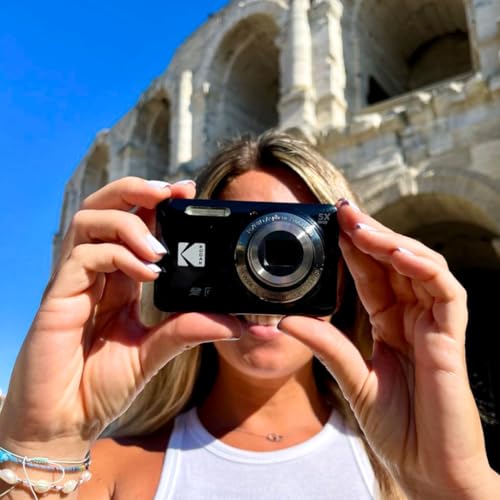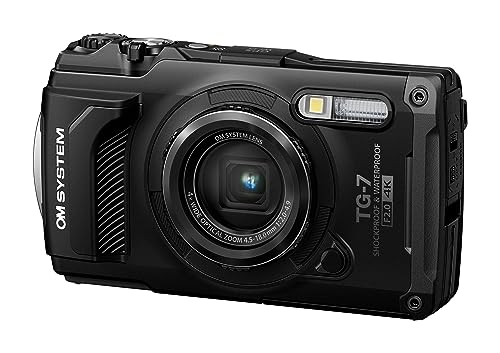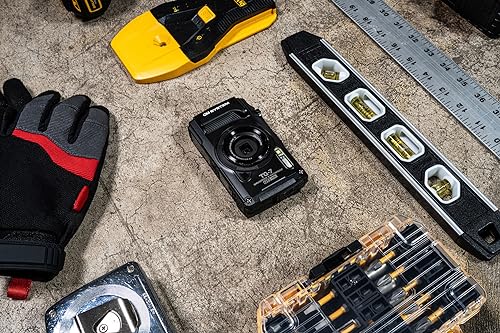



As a photography enthusiast, I have always been fascinated by the technology behind digital cameras. One crucial component that plays a significant role in capturing high-quality images is the image sensor. The image sensor is like the digital equivalent of film in traditional cameras, converting light into digital signals that create the final image.
There are various types of image sensors used in digital cameras, each with its strengths and weaknesses. From CCD (Charge-Coupled Device) sensors to the more popular CMOS (Complementary Metal-Oxide-Semiconductor) sensors, choosing the right sensor can greatly impact the image quality and performance of a camera.
In this article, we will delve into the world of image sensors, discussing the key features, advantages, and drawbacks of different sensor technologies. Whether you are a beginner looking to understand the basics or a seasoned photographer seeking to upgrade your gear, understanding image sensors is crucial for making informed choices when it comes to digital cameras.
My Experience with High-Quality Image Sensors in Digital Cameras
When it comes to capturing stunning photographs with my digital camera, the image sensor plays a crucial role in the overall quality of the image. Over the years, I have experimented with various digital cameras equipped with different types of image sensors, and I have found that the CMOS image sensor stands out as one of the best options available.
One of the key advantages of the CMOS image sensor is its ability to deliver exceptional image quality in a wide range of lighting conditions. Whether I am shooting in bright sunlight or low-light situations, the CMOS sensor consistently produces sharp, detailed images with accurate colours and minimal noise. This makes it an ideal choice for capturing everything from landscapes to portraits with stunning clarity and depth.
- Another notable feature of the CMOS image sensor is its impressive speed and efficiency. It allows me to capture fast-moving subjects with ease, thanks to its rapid data readout and processing capabilities. This is particularly useful when shooting sports events, wildlife, or any other dynamic scenes where timing is crucial.
- Furthermore, the CMOS sensor’s low power consumption and compact size make it a versatile option for a wide range of digital cameras, from compact point-and-shoot models to high-end DSLRs. This flexibility allows me to choose a camera that best suits my needs and photography style, without compromising on image quality.
Sensor Size
In the realm of digital cameras, the size of the sensor plays a crucial role in determining the quality of the images captured. A larger sensor allows for more light to be captured, resulting in better image quality, especially in low-light conditions.
When comparing different digital cameras, it’s essential to consider the sensor size as a significant factor. Cameras with larger sensors tend to produce sharper images with more detail and better dynamic range compared to cameras with smaller sensors.
- Larger sensors offer better low-light performance.
- They provide higher image quality with more detail.
- Cameras with larger sensors tend to have better dynamic range.
Megapixels
When it comes to digital cameras, one of the key factors to consider is the number of megapixels in the image sensor. Megapixels refer to the resolution of the images that can be captured by the camera, with higher megapixel counts generally resulting in sharper and more detailed images.
Having a higher megapixel count can be beneficial if you plan to print your photos in large formats or crop them extensively without losing image quality. However, it’s important to note that the number of megapixels is not the only factor that determines image quality. The size and quality of the image sensor, as well as the camera’s processing capabilities, also play a significant role in producing high-quality images.
- Higher megapixel count allows for greater detail in images
- Consider other factors like sensor size and processing capabilities for overall image quality
- Choose a camera with an appropriate megapixel count based on your intended use
Low Light Performance
In the realm of digital photography, the ability of a camera to perform well in low light conditions is crucial for capturing stunning images. When light levels are low, the image sensor’s sensitivity becomes a key factor in determining the quality of the photos. A high-performing sensor can produce clear and detailed images even in dimly lit environments, allowing photographers to capture memorable moments without compromising on image quality.
One of the critical aspects of low light performance is the sensor’s signal-to-noise ratio, which affects the camera’s ability to capture light accurately and reduce noise in the final image. A sensor with excellent low light performance will produce images with minimal noise, ensuring that the details and colours remain sharp and true to life. This is especially important when shooting in challenging lighting conditions such as indoor settings or night photography.
- High sensitivity sensor
- Advanced noise reduction technology
- Wide dynamic range
- Large pixel size
Understanding Dynamic Range in Image Sensors
Dynamic range is a critical aspect of image sensors in digital cameras. It refers to the range of brightness levels that a sensor can capture, from the darkest shadows to the brightest highlights. A wider dynamic range allows for more detail to be preserved in both the shadows and highlights of an image, resulting in higher-quality photos with greater depth and contrast.
When choosing a digital camera, it’s important to consider the dynamic range of its image sensor. A sensor with a high dynamic range can capture scenes with high contrast and challenging lighting conditions more effectively, producing images with rich tonal gradations and accurate colours. This is particularly important in landscape photography, where capturing the full range of tones from shadows to highlights is crucial for creating stunning and realistic images.
- Key Point: Dynamic range plays a significant role in the quality of images produced by digital cameras, allowing for greater detail and tonal range in photos.
- Tip: When comparing digital cameras, look for sensors with a wide dynamic range to ensure superior image quality, especially in challenging lighting conditions.
Color Accuracy
When it comes to capturing true-to-life colors in digital photography, the image sensor plays a crucial role. The color accuracy of a sensor determines how faithfully it reproduces the colors of the scene being photographed. This is essential for professional photographers and enthusiasts who rely on precise color rendition for their work.
Some image sensors are known for their superior color accuracy, thanks to advanced technologies like RGB color filter arrays, improved color processing algorithms, and high-quality sensor materials. These sensors can capture a wide range of colors with exceptional fidelity, making them ideal for tasks where color accuracy is paramount, such as product photography or portrait sessions.
- RGB Color Filter Arrays: Image sensors with RGB color filter arrays use separate red, green, and blue filters for each pixel to accurately capture the color information of the scene.
- Color Processing Algorithms: Advanced algorithms embedded in the sensor’s image processing pipeline help enhance color accuracy by correcting color biases and optimizing color reproduction.
- High-Quality Sensor Materials: The quality of the sensor’s materials, such as silicon substrates and microlenses, can also impact color accuracy by reducing noise and improving light sensitivity.
Noise Levels
When it comes to evaluating the performance of image sensors in digital cameras, one crucial factor to consider is the noise levels produced by the sensor. Noise in digital images can manifest as graininess, color distortion, or loss of detail, and can significantly impact the overall image quality.
During my research on image sensors, I discovered that some sensors are designed to minimize noise levels by employing advanced technologies such as backside illumination, larger pixel sizes, and improved signal processing algorithms. These innovations help reduce both luminance noise (graininess in brightness levels) and chrominance noise (color distortion) in images, resulting in cleaner and more accurate photos.
- Backside illumination technology
- Larger pixel sizes
- Improved signal processing algorithms
Speed and Responsiveness
When it comes to capturing fast-moving subjects or spontaneous moments, the speed and responsiveness of an image sensor can make all the difference. With my experience in using different digital cameras, I have found that a high-quality image sensor with quick processing capabilities can ensure that I never miss a shot, even in challenging conditions.
Whether I’m shooting sports events, wildlife, or portraits, having a responsive image sensor allows me to capture the moment with precision and clarity. The ability to focus quickly, adjust exposure settings on the fly, and capture multiple frames per second is essential for getting the perfect shot every time. The advanced technology in modern image sensors helps me achieve sharp and detailed images, even in low light situations, ensuring that I can deliver stunning results in any shooting scenario.
Price-to-Performance Ratio
When considering the best image sensors in digital cameras, it’s important to also take into account the price-to-performance ratio. This ratio helps determine the value you get for the money you spend on a camera with a particular image sensor.
While high-end image sensors like those found in full-frame DSLRs and mirrorless cameras offer exceptional image quality and performance, they come at a higher price point. On the other hand, budget-friendly cameras with smaller sensors may not deliver the same level of image quality but offer a more affordable option for casual photographers.
- High Price, High Performance: Cameras with top-of-the-line image sensors typically come with a higher price tag but deliver superior image quality, low-light performance, and dynamic range.
- Mid-Range Options: Cameras with APS-C or Micro Four Thirds sensors strike a balance between performance and price, making them popular choices for enthusiasts and professionals on a budget.
- Budget-Friendly Choices: Cameras with smaller sensors like 1-inch or smaller are more affordable but may sacrifice some image quality and low-light performance compared to larger sensors.
Ultimately, the price-to-performance ratio will vary depending on your budget, photography needs, and preferences. It’s essential to consider both the image sensor quality and the overall value a camera offers when making your purchasing decision.
Best image sensors in digital cameras
Features
| Part Number | FZ55BK |
| Model | FZ55-BK |
| Warranty | 1 year manufacturer |
| Color | Black |
| Release Date | 2022-05-07T00:00:01Z |
| Price history for KODAK PIXPRO FZ55 Digital Camera | |
|---|---|
|
Latest updates:
|
|
Features
| Is Adult Product | |
| Release Date | 2005-08-05T00:00:01Z |
| Edition | 1 |
| Language | English |
| Number Of Pages | 370 |
| Publication Date | 2005-08-05T00:00:01Z |
| Format | Illustrated |
| Price history for Image Sensors for Digital Cameras | |
|---|---|
|
Latest updates:
|
|
Features
| Part Number | 2727C002 |
| Model | 2727C002 |
| Warranty | 1 year manufacturer |
| Color | Black |
| Release Date | 2019-03-06T00:00:01Z |
| Size | 55mm |
Features
| Part Number | V110030BU000 |
| Model | OM SYSTEM Tough TG-7 Black |
| Warranty | 1 Year Manufacturer |
| Color | Black |
| Release Date | 2023-10-01T00:00:01Z |
| Size | Compact |
| Price history for OM SYSTEM Tough TG-7 Underwater Camera | |
|---|---|
|
Latest updates:
|
|
Features
| Model | W08 |
| Color | YL15-W08-C-Black |
| Is Adult Product |
Features
| Part Number | 9781498764643 |
| Is Adult Product | |
| Release Date | 2020-06-03T00:00:01Z |
| Edition | 2 |
| Language | English |
| Number Of Pages | 310 |
| Publication Date | 2020-06-03T00:00:01Z |
Q&A:
What are some of the best image sensors used in digital cameras?
Some of the best image sensors used in digital cameras include the Sony Exmor RS, Canon CMOS sensors, and Nikon CMOS sensors.
How do image sensors impact the quality of photos in digital cameras?
Image sensors play a crucial role in determining the image quality of digital cameras by capturing light and converting it into digital signals. Higher quality sensors typically result in better image resolution, dynamic range, and low-light performance.



































